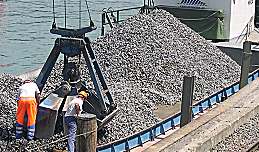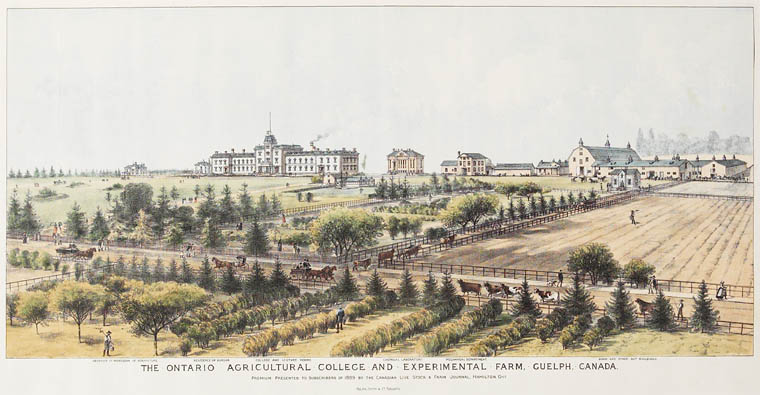|
Eiju Yatsu
Eiju Yatsu (20 July 1920 - 15 December 2016) was a Japanese geomorphologist who taught in Japan, US and Canada. He is best known for his contributions to weathering and 'rock control' in geomorphology. Career Eiju Yatsu was born in Mito City, Ibaraki Prefecture, Japan in 1920. In 1940, he entered the Tokyo Higher Normal School and studied literature and geography but then changed his interests to science. He graduated from the Tokyo University of Literature and Science in 1945 with a BSc, having studied physical geography, geology and geophysics. He then went on to do a wide range of postgraduate studies and was awarded a DSc from Tokyo University of Education[?] in 1957. From 1954 to 1966, he was assistant and then full professor at Chuo University (Tokyo), teaching earth sciences and engineering geology. He was visiting professor at Louisiana State University in 1965–66 and the University of Ottawa in 1966–69, and then became associate and then full professor at the Univ ... [...More Info...] [...Related Items...] OR: [Wikipedia] [Google] [Baidu] |
Mito, Ibaraki
is the capital city of Ibaraki Prefecture, in the northern Kantō region of Japan. , the city had an estimated population of 269,330 in 123,282 households and a population density of 1239 persons per km2. The percentage of the population aged over 65 was 27.1%. The total area of the city is . Geography Mito is located in central Ibaraki Prefecture. Mito Station is about 10 km inland from the Pacific Ocean which Naka River, flowing from the north to the east of the city, pours into. Immediately south is Lake Senba, a recreational area. A main street extends from Mito Station to the west, and residential areas to the south and the west in particular. Surrounding municipalities Ibaraki Prefecture * Hitachinaka * Kasama * Naka * Ibaraki * Ōarai * Shirosato Climate Mito has a Humid subtropical climate (Köppen ''Cfa'') characterized by warm summers and cold winters with light snowfall. The average annual temperature in Mito is 13.6 °C. The average annual rainfall ... [...More Info...] [...Related Items...] OR: [Wikipedia] [Google] [Baidu] |
University Of Tsukuba
is a public university, public research university located in Tsukuba, Ibaraki Prefecture, Ibaraki, Japan. It is a top 10 Designated National University, and was ranked Type A by the Japanese government as part of the Top Global University Project. The university has 28 college clusters and schools with around 16,500 students (as of 2014). The main Tsukuba campus covers an area of 258 hectares (636 acres), making it the second largest single campus in Japan. The university branch campus is in Bunkyō, Bunkyo-ku, Tokyo, offering graduate programs for working adults in the capital and managing K-12 schools in Tokyo that are attached to the university. Features The university is primarily focused on STEMM fields (Science, Technology, Engineering, Mathematics, Medicine), physical education, and related interdisciplinary fields. This focus is reflected by the university's location in the heart of Tsukuba Science City, alongside over 300 other research institutions. The univer ... [...More Info...] [...Related Items...] OR: [Wikipedia] [Google] [Baidu] |
2016 Deaths
This is a list of deaths of notable people, organised by year. New deaths articles are added to their respective month (e.g., Deaths in ) and then linked here. 2022 2021 2020 2019 2018 2017 2016 2015 2014 2013 2012 2011 2010 2009 2008 2007 2006 2005 2004 2003 2002 2001 2000 1999 1998 1997 1996 1995 1994 1993 1992 1991 1990 1989 1988 1987 See also * Lists of deaths by day The following pages, corresponding to the Gregorian calendar, list the historical events, births, deaths, and holidays and observances of the specified day of the year: Footnotes See also * Leap year * List of calendars * List of non-standard ... * Deaths by year {{DEFAULTSORT:deaths by year ... [...More Info...] [...Related Items...] OR: [Wikipedia] [Google] [Baidu] |
1920 Births
Nineteen or 19 may refer to: * 19 (number), the natural number following 18 and preceding 20 * one of the years 19 BC, AD 19, 1919, 2019 Films * ''19'' (film), a 2001 Japanese film * ''Nineteen'' (film), a 1987 science fiction film Music * 19 (band), a Japanese pop music duo Albums * ''19'' (Adele album), 2008 * ''19'', a 2003 album by Alsou * ''19'', a 2006 album by Evan Yo * ''19'', a 2018 album by MHD * ''19'', one half of the double album ''63/19'' by Kool A.D. * ''Number Nineteen'', a 1971 album by American jazz pianist Mal Waldron * ''XIX'' (EP), a 2019 EP by 1the9 Songs * "19" (song), a 1985 song by British musician Paul Hardcastle. * "Nineteen", a song by Bad4Good from the 1992 album '' Refugee'' * "Nineteen", a song by Karma to Burn from the 2001 album ''Almost Heathen''. * "Nineteen" (song), a 2007 song by American singer Billy Ray Cyrus. * "Nineteen", a song by Tegan and Sara from the 2007 album '' The Con''. * "XIX" (song), a 2014 song by Slip ... [...More Info...] [...Related Items...] OR: [Wikipedia] [Google] [Baidu] |
Japanese Geologists
Japanese may refer to: * Something from or related to Japan, an island country in East Asia * Japanese language, spoken mainly in Japan * Japanese people, the ethnic group that identifies with Japan through ancestry or culture ** Japanese diaspora, Japanese emigrants and their descendants around the world * Japanese citizens, nationals of Japan under Japanese nationality law ** Foreign-born Japanese, naturalized citizens of Japan * Japanese writing system, consisting of kanji and kana * Japanese cuisine, the food and food culture of Japan See also * List of Japanese people * * Japonica (other) * Japonicum * Japonicus * Japanese studies Japanese studies (Japanese: ) or Japan studies (sometimes Japanology in Europe), is a sub-field of area studies or East Asian studies involved in social sciences and humanities research on Japan. It incorporates fields such as the study of Japanese ... {{disambiguation Language and nationality disambiguation pages ... [...More Info...] [...Related Items...] OR: [Wikipedia] [Google] [Baidu] |
Neurath's Boat
Neurath's boat (or Neurath's ship) is a simile used in anti-foundational accounts of knowledge, especially in the philosophy of science. It was first formulated by Otto Neurath. It is based in part on the Ship of Theseus which, however, is standardly used to illustrate other philosophical questions, to do with problems of identity. It was popularised by Willard Van Orman Quine in ''Word and Object'' (1960). Neurath used the simile in several occasions, the first being in Neurath's text "Problems in War Economics" (1913). In "Anti-Spengler" (1921) Neurath wrote: Neurath's non-foundational analogy of reconstructing piecemeal a ship at sea contrasts with Descartes' much earlier foundationalist analogy—in ''Discourse on the Method'' (1637) and ''Meditations on First Philosophy'' (1641)—of demolishing a building all at once and rebuilding from the ground up. Neurath himself pointed out this contrast. The boat was replaced by a raft in discussions by some philosophers, such as P ... [...More Info...] [...Related Items...] OR: [Wikipedia] [Google] [Baidu] |
Paul Feyerabend
Paul Karl Feyerabend (; January 13, 1924 – February 11, 1994) was an Austrian-born philosopher of science best known for his work as a professor of philosophy at the University of California, Berkeley, where he worked for three decades (1958–1989). At various points in his life, he lived in England, the United States, New Zealand, Italy, Germany, and finally Switzerland. His major works include ''Against Method'' (1975), ''Science in a Free Society'' (1978) and ''Farewell to Reason'' (1987). Feyerabend became famous for his purportedly anarchistic view of science and his rejection of the existence of universal methodological rules. He was an influential figure in the sociology of scientific knowledge. Asteroid (22356) Feyerabend is named in his honour. Biography Early life Feyerabend was born in 1924 in Vienna, where he attended primary and high school. In this period he got into the habit of frequent reading, developed an interest in theatre, and started singing lessons. ... [...More Info...] [...Related Items...] OR: [Wikipedia] [Google] [Baidu] |
Abductive Reasoning
Abductive reasoning (also called abduction,For example: abductive inference, or retroduction) is a form of logical inference formulated and advanced by American philosopher Charles Sanders Peirce beginning in the last third of the 19th century. It starts with an observation or set of observations and then seeks the simplest and most likely conclusion from the observations. This process, unlike deductive reasoning, yields a plausible conclusion but does not positively verify it. Abductive conclusions are thus qualified as having a remnant of uncertainty or doubt, which is expressed in retreat terms such as "best available" or "most likely". One can understand abductive reasoning as inference to the best explanation, although not all usages of the terms ''abduction'' and ''inference to the best explanation'' are exactly equivalent. In the 1990s, as computing power grew, the fields of law, computer science, and artificial intelligence researchFor examples, seeAbductive Inference i ... [...More Info...] [...Related Items...] OR: [Wikipedia] [Google] [Baidu] |
Charles Sanders Peirce
Charles Sanders Peirce ( ; September 10, 1839 – April 19, 1914) was an American philosopher, logician, mathematician and scientist who is sometimes known as "the father of pragmatism". Educated as a chemist and employed as a scientist for thirty years, Peirce made major contributions to logic, a subject that, for him, encompassed much of what is now called epistemology and the philosophy of science. He saw logic as the formal branch of semiotics, of which he is a founder, which foreshadowed the debate among logical positivists and proponents of philosophy of language that dominated 20th-century Western philosophy. Additionally, he defined the concept of abductive reasoning, as well as rigorously formulated mathematical induction and deductive reasoning. As early as 1886, he saw that logic gate, logical operations could be carried out by electrical switching circuits. The same idea was used decades later to produce digital computers. See Also In 1934, the philosopher Paul W ... [...More Info...] [...Related Items...] OR: [Wikipedia] [Google] [Baidu] |
Rock Mechanics
Rock mechanics is a theoretical and applied science of the mechanical behavior of rock and rock masses; compared to geology, it is that branch of mechanics concerned with the response of rock and rock masses to the force fields of their physical environment. 

[...More Info...] [...Related Items...] OR: [Wikipedia] [Google] [Baidu] |
Joetsu University Of Education
is a national university in Joetsu, Niigata, Japan Japan ( ja, 日本, or , and formally , ''Nihonkoku'') is an island country in East Asia. It is situated in the northwest Pacific Ocean, and is bordered on the west by the Sea of Japan, while extending from the Sea of Okhotsk in the north ..., founded in 1978. External links Official website Educational institutions established in 1978 Japanese national universities Teachers colleges in Japan Universities and colleges in Niigata Prefecture 1978 establishments in Japan Jōetsu, Niigata {{niigata-university-stub ... [...More Info...] [...Related Items...] OR: [Wikipedia] [Google] [Baidu] |
University Of Guelph
, mottoeng = "to learn the reasons of realities" , established = May 8, 1964 ()As constituents: OAC: (1874) Macdonald Institute: (1903) OVC: (1922) , type = Public university , chancellor = Mary Anne Chambers (not yet installed) , president = Charlotte A.B. Yates , city = Guelph, Ontario , country = Canada , students = 29,923 , undergrad = 23,926 , postgrad = 3,035 , faculty = 830 , administrative_staff = 3,100 , campus = Urban , athletics_affiliations = CIS, OUA , sports_nickname = Gryphons , colours = , , affiliations = AUCC, CARL, IAU, COU, CIS, CUSID, Fields Institute, OUA, Ontario Network of Women in engineering, CBIE , endowment = CA$418 million (2021) , website = , logo ... [...More Info...] [...Related Items...] OR: [Wikipedia] [Google] [Baidu] |





